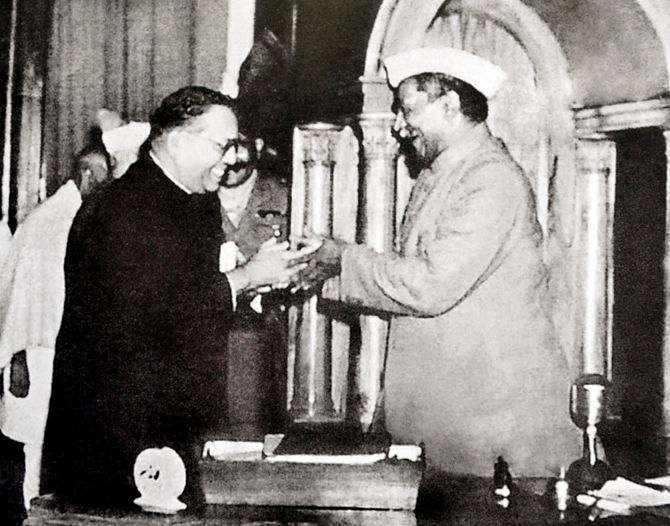Decoding Republic Day(on its 70th year)!
- Pravasini Sahoo

- Jan 27, 2019
- 4 min read
Updated: Feb 4, 2021
As a kid, I would always find the significance of Republic Day difficult to comprehend in comparison to Independence Day. The same is being repeated with my 5 year old son. He is excited about the holiday and the parade but failed to relate it to the constitution of india, although he can recite the preamble...without understanding it a bit. Our heart fills with pride when we see the National Flag unfurling on Republic Day. 26th January brings out the patriot in us and it will double if we know the actual significance the day holds for us.Can we ever explain our kids that after India got its freedom, there was a dire need for the country to have its own rules and regulations such as, the right of the citizens, their duty and responsibility towards the country, about democracy and governance and so on. But wait a minute...India got its freedom in August 1947 and the rule book came into operation in January 1950. So, was there chaos in the country for two and half years. Ahh.... maybe they tried to wean themselves from the British Raj during that period. At the stroke of the midnight hour on August 15, 1947, when the world slept, India woke to life and freedom only to be the constitutional monarchy under King George VI, with Earl Mountbatten as the Governor General till June 1948. This india had no democracy or constitution in place and followed British Government's Government of India Act 1935. The price we had to pay was that we were denied the freedom of electing our own leaders, who could run the country and many more such freedom.

Drafting Constitution of India: After Lord Mountbatten, C Rajagopalachari was the first and only Indian born ever and last Governor General of India after India became a Republic in 1950. This is when the Constitution Assembly headed by B R Ambedkar was formed to draft the Constitution of India. Drafting the Constitution was a herculean task. Dr B.R. Ambedkar took 2 years and 11 months to draft the Indian Constitution. This committee worked vigorously and its final version was ratified by the Constituent Assembly on 26 November, 1949. Our leaders took the best aspects from other countries' constitutions. The concept of liberty, equality and fraternity came from the French constitution while the Five-Year Plans came from the USSR constitution. Finally, India became a sovereign democratic republic (full right and power of a governing body over itself, without any interference from outside sources or bodies) after its constitution came into effect on 26 January 1950. The history behind this date is that, January 26, 1930 was earlier celebrated as India's Independence Day or Purna Swaraj Day. It's the day India decided to fight for complete freedom. After we achieved Independence on August 15 in 1947, our leaders wanted January 26 to be remembered in history as well. Therefore, the day was made to coincide with the day of Swaraj.

Republic of India: India was declared a sovereign, socialist, secular, democratic republic, assuring its citizens justice, equality, and liberty, and endeavours to promote fraternity. Dr.Rajendra Prasad became the first President and Jawaharlal Nehru, the first Prime minister of Republic India. India held its first national elections under the Constitution in 1952. The National congress Party won an overwhelming majority, and Jawaharlal Nehru began a second term as Prime Minister. Rajendra Prasad was also elected President to a second term by the electoral college of the first parliament of India.

About the Constitution of India: This book is one of 1,000 photolithographic reproductions of the Constitution of the Republic of India, which came into effect on January 26, 1950, after being approved by the Constituent Assembly on November 26, 1949. The original of this elaborate edition took nearly five years to produce. It is signed by the framers of the constitution, most of whom are regarded as the founders of the Republic of India. The original of the book is kept in a special helium-filled case in the Library of the Parliament of India. The illustrations represent styles from the different civilizations of the subcontinent, ranging from the prehistoric Mohenjodaro, in the Indus Valley, to the present. The original constitution was handwritten in Hindi and English with calligraphy by Prem Behari Narain Raizada. It was illuminated by Nandalal Bose and other artists, published by Dehra Dun, and photolithographed at the Survey of India Offices.

Republic Day celebrations: The first Republic Day was celebrated on January 26, 1950, three years after we got independence. Republic Day Celebrations are a 3 day long affair. The celebrations end on January 29 with the Beating Retreat ceremony. It is performed by the bands of the three wings of the military, the Indian Army, Indian Navy and Indian Air Force. The first Republic Day parade at Rajpath was held in 1955. The chief guest at the parade was Pakistan's Governor General Malik Ghulam Muhammad. "Abide with Me", a Christian hymn by Scottish Anglican Henry Francis Lyte, is sung at the end of the Republic Day celebration. It is believed to be one of Mahatma Gandhi's favourite songs.
A very important quote by B R Ambedkar for the constitution of India was:
“I feel that the constitution is workable, it is flexible and it is strong enough to hold the country together both in peacetime and in wartime. Indeed, if I may say so, if things go wrong under the new Constitution, the reason will not be that we had a bad Constitution. What we will have to say is that Man was vile.” – B. R. Ambedkar
Jai Bhim!




Comments